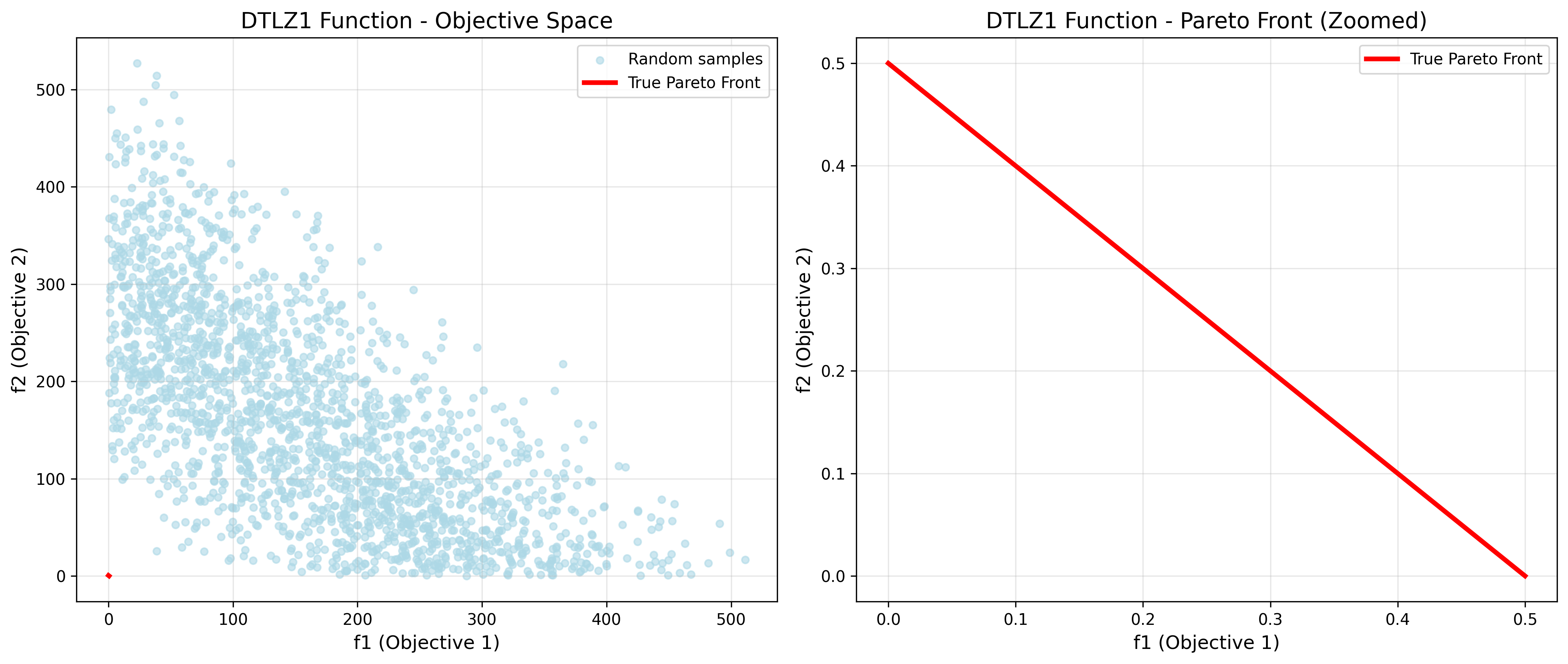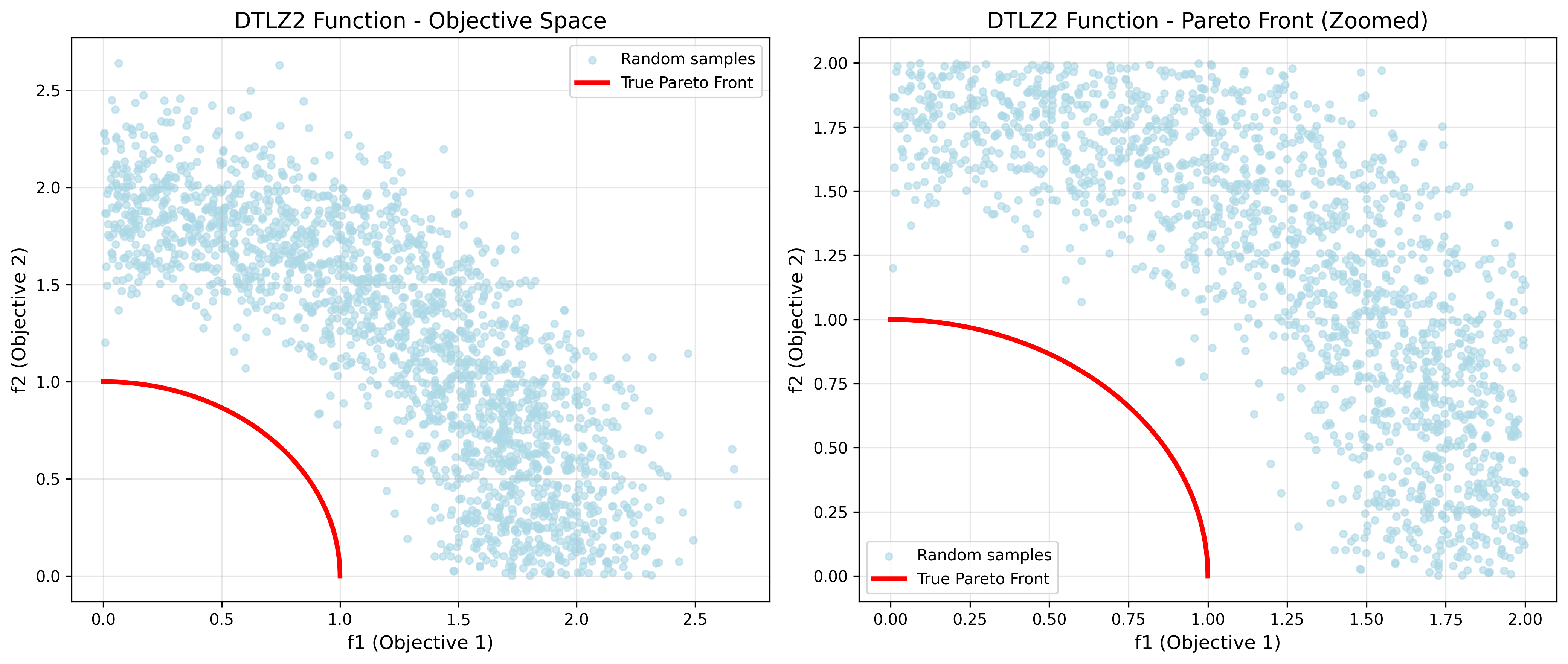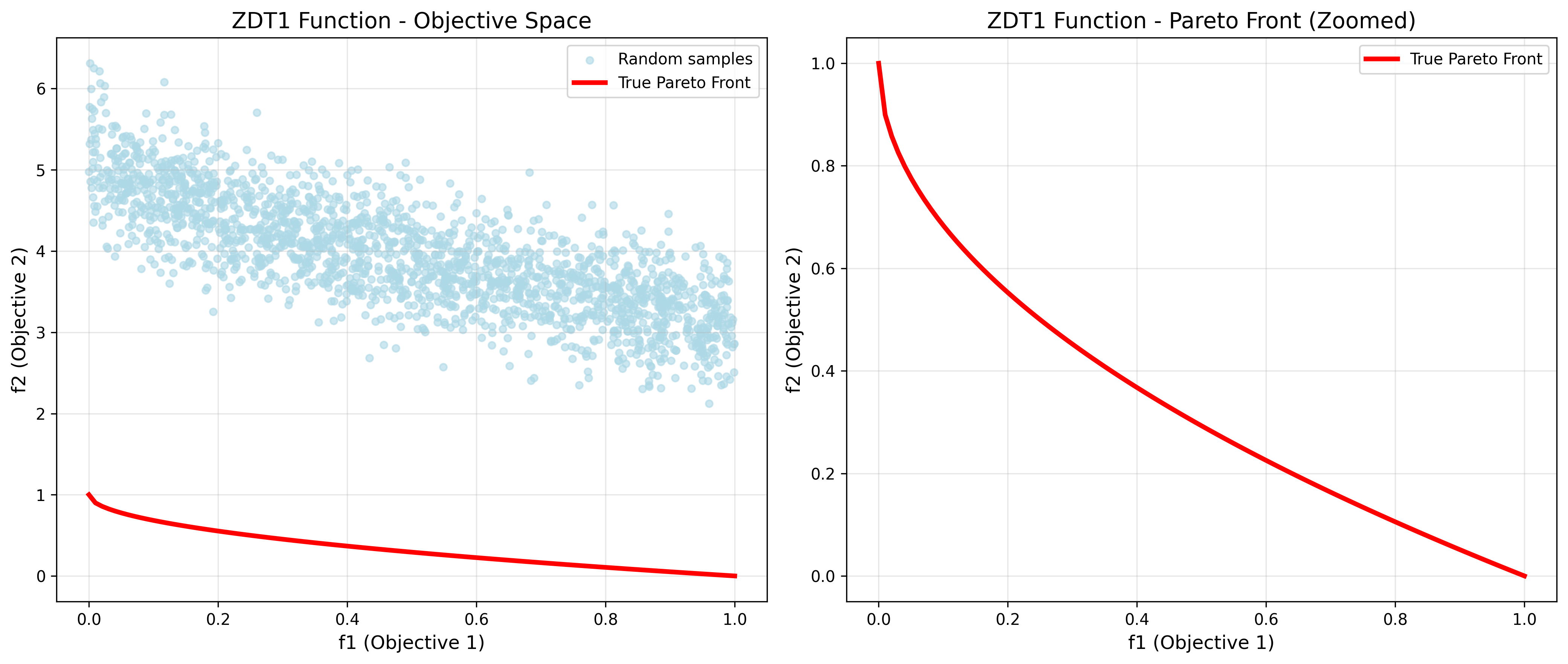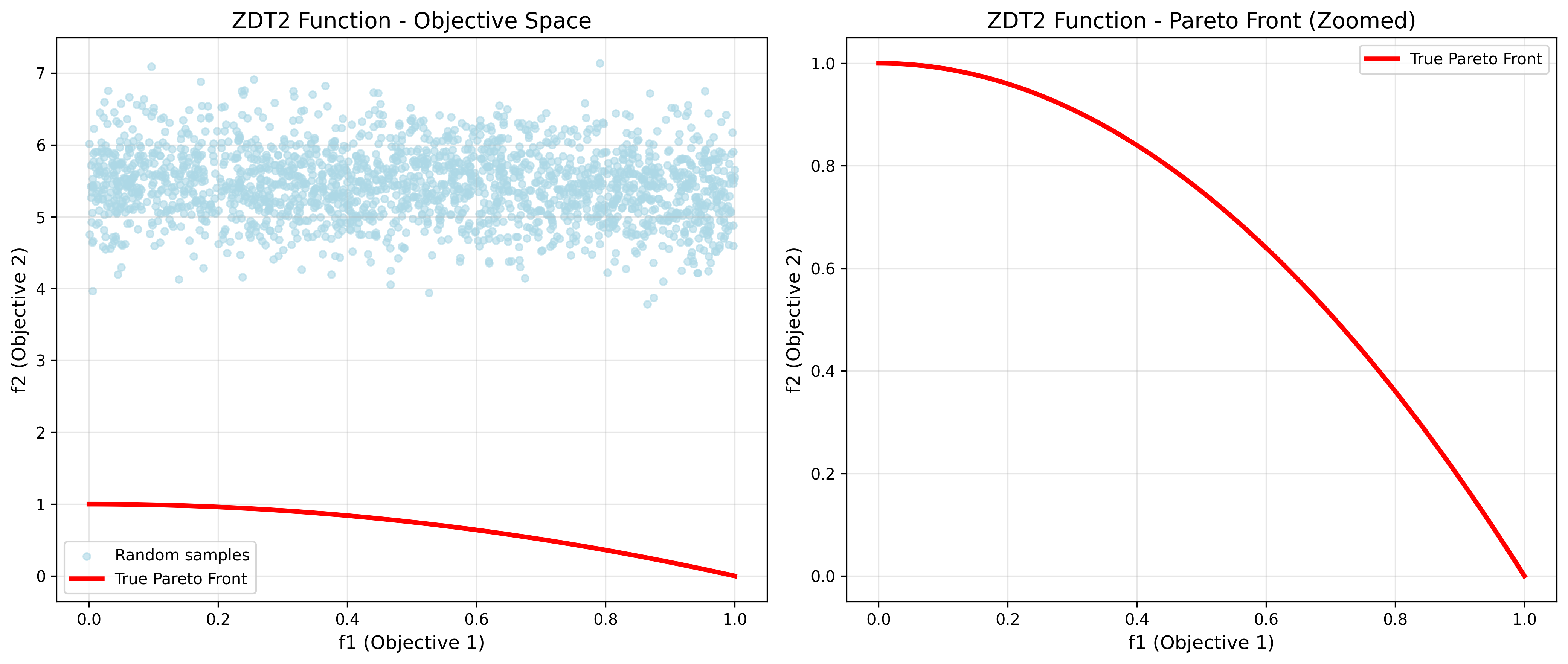Multi-Objective
The following explains the details of the 4 multi-objective functions.
For multi-objective optimization, it is difficult to display the function form as in single-objective optimization. Therefore, we display the results of random sampling and the Pareto front line in a graph.
DTLZ1
DTLZ1 is a scalable multi-objective test problem featuring a linear Pareto front. This function is designed to test the convergence ability of multi-objective optimization algorithms in the presence of multiple local optima. It is particularly useful for evaluating algorithm performance on problems with linear trade-off relationships between objectives, such as resource allocation problems where different objectives compete linearly for limited resources.
Key characteristics:
- Linear Pareto front forming a hyperplane
- Multi-modal landscape with many local optima
- Scalable to any number of objectives
- Tests both convergence and diversity maintenance

DTLZ2
DTLZ2 is a scalable multi-objective test problem with a spherical Pareto front. Unlike DTLZ1, this function has a unimodal structure, making it simpler but still challenging for testing algorithm convergence. It is designed to evaluate the ability of optimization algorithms to handle problems with spherical trade-off relationships, commonly found in engineering design where objectives represent different performance criteria with balanced trade-offs.
Key characteristics:
- Spherical Pareto front (unit sphere in objective space)
- Unimodal landscape (single global optimum region)
- Scalable to any number of objectives
- Ideal for testing convergence speed and solution quality

ZDT1
ZDT1 is a fundamental two-objective test function featuring a convex Pareto front. This function serves as a basic benchmark for bi-objective optimization algorithms and represents problems where objectives have a smooth, convex trade-off relationship. It is commonly used to test algorithm performance on problems similar to portfolio optimization, where risk and return exhibit convex trade-offs, or structural design where weight and strength follow convex relationships.
Key characteristics:
- Convex Pareto front with smooth curvature
- Two-objective formulation (f₁ vs f₂)
- Simple structure ideal for algorithm comparison
- Represents convex trade-off scenarios in real-world problems

ZDT2
ZDT2 is a two-objective test function featuring a non-convex (concave) Pareto front. This function is designed to challenge optimization algorithms that assume convexity in the Pareto front shape. It represents real-world problems where objectives exhibit concave trade-off relationships, such as manufacturing processes where efficiency gains become progressively harder to achieve, or environmental problems where pollution reduction costs increase non-linearly.
Key characteristics:
- Non-convex (concave) Pareto front shape
- Two-objective formulation with increased complexity
- Tests algorithm ability to handle non-convex trade-offs
- Represents diminishing returns scenarios in optimization
